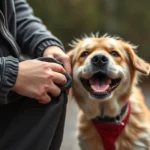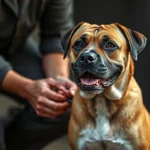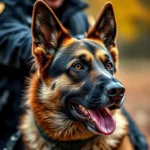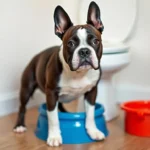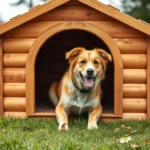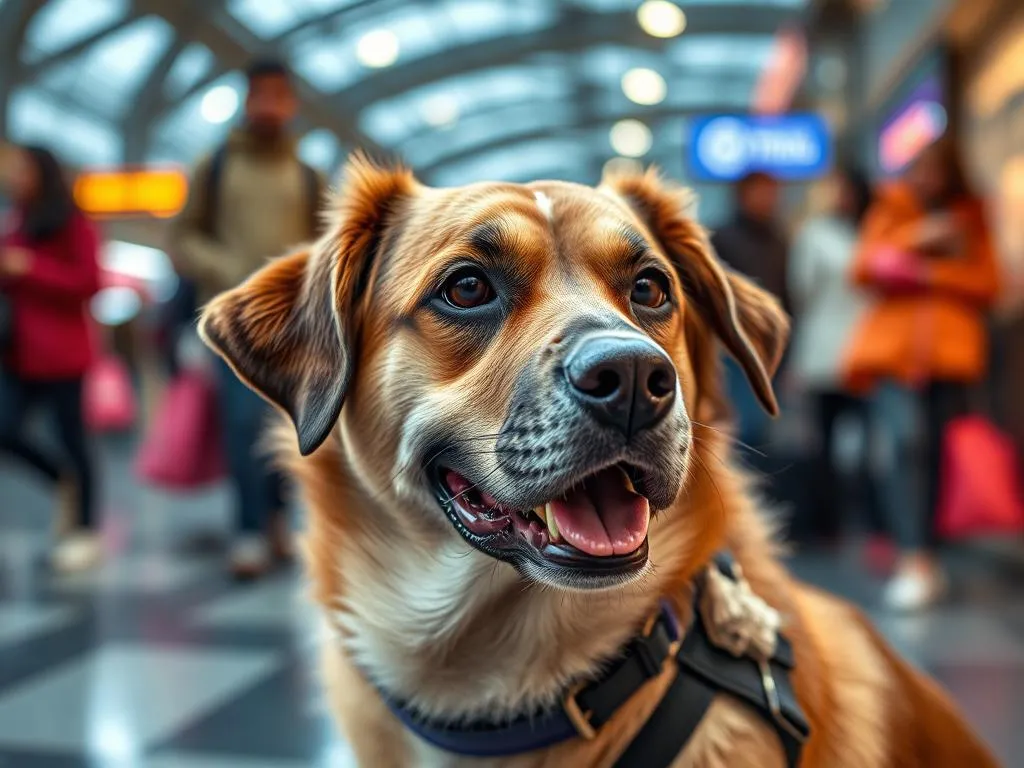
Introduction
Training your dog to be calm in public is essential for a harmonious relationship between you and your furry friend. Whether you’re strolling through a busy park, attending a pet-friendly event, or simply walking down the street, having a dog that exhibits calm behavior can significantly enhance your experience. How to train dog to be calm in public not only benefits the dog by reducing anxiety and fear but also helps owners enjoy outings without the stress of managing an excitable pet. The main goal of this training journey is to teach dogs how to remain composed in various public settings, ensuring safety and enjoyment for all involved.
Understanding Dog Behavior
The Basics of Dog Behavior
To effectively train your dog, it’s crucial to understand canine instincts and social behavior. Dogs are social animals, often influenced by their surroundings and the behavior of others. Anxious or excitable dogs may exhibit behaviors such as barking, jumping, or pulling on the leash when faced with unfamiliar environments or stimuli. Recognizing these behaviors is the first step in addressing them and helping your dog learn to remain calm.
The Impact of Environment
Different environments can significantly affect a dog’s behavior. For instance, crowded places with unfamiliar sounds and scents can overwhelm a dog, causing them to react in ways that are not conducive to calmness. Identifying the specific triggers that cause excitement or anxiety in your dog is vital as it allows you to tailor your training approach.
Preparing for Training
Assessing Your Dog’s Current Behavior
Before diving into training, observe your dog’s responses to various stimuli. Take note of when they seem anxious or overly excited, whether it’s around other dogs, loud noises, or even large crowds. This assessment will help you identify specific issues that need to be addressed during training.
Establishing a Positive Training Environment
Creating a calm and quiet space for initial training sessions is essential. Choose an area with minimal distractions to help your dog focus. Consistency in training locations and times will also reinforce the learning process, making it easier for your dog to grasp the concepts you are teaching.
Basic Commands and Techniques
Essential Commands for Calmness
Teaching your dog basic commands such as Sit, Stay, and Lie Down is fundamental in establishing control. These commands serve as the foundation for more advanced training and can be critical during outings. For example, when your dog is asked to Sit, they are less likely to jump or bark at distractions.
Positive Reinforcement Techniques
Positive reinforcement is a powerful training method that encourages desired behaviors through rewards. Using treats, praise, or playtime as rewards can motivate your dog to maintain calmness in public settings. This method not only builds trust but also makes the training experience enjoyable for your dog.
Gradual Exposure to Public Settings
Starting Small: Controlled Environments
Begin your training in less stimulating environments, such as quiet parks or your backyard. Gradually increase distractions as your dog becomes more comfortable with their training. This step-by-step approach helps your dog adjust without feeling overwhelmed.
Simulating Public Scenarios
Role-playing public situations can be beneficial for training. Practice walking past other dogs or people in a controlled setting to help your dog learn how to behave appropriately. Utilizing controlled group settings, such as dog training classes, can provide additional opportunities for practice in a supervised environment.
Advanced Training Techniques
Socialization with Other Dogs and People
Exposing your dog to various social settings is essential for their development. Interaction with other dogs and people helps your dog become accustomed to different stimuli, making them less reactive in public. Arrange playdates or attend dog parks to facilitate these socialization sessions.
Desensitization and Counter-Conditioning
Desensitization is a method used to gradually expose your dog to public distractions. Start with low-level stimuli and increase exposure over time. Counter-conditioning involves changing your dog’s emotional response to a specific trigger. For instance, if your dog becomes anxious around other dogs, reward them with treats when they remain calm in their presence.
Managing Anxiety and Reactivity
Recognizing Signs of Anxiety
Understanding the signs of stress and anxiety in dogs is crucial. Common indicators include excessive barking, panting, or cowering. When you notice these signs in public, it’s important to respond appropriately. Remove your dog from the stressful situation if necessary, and provide comfort and reassurance.
Techniques to Calm an Anxious Dog
Various techniques can help calm an anxious dog. Breathing exercises, using calming products such as anxiety wraps, or pheromone diffusers can create a soothing environment for your pet. Additionally, maintaining a calm demeanor as the owner can significantly impact your dog’s behavior. Dogs are intuitive and often mirror their owner’s emotions.
Consistency and Ongoing Training
Establishing a Training Routine
Creating a consistent training routine is vital for success. Daily practice and reinforcement will help solidify the commands and techniques you’ve taught your dog. Find ways to integrate training into your daily life, such as practicing commands during walks or while at home.
Setting Realistic Goals and Expectations
It’s essential to set realistic goals and expectations during the training process. Understand that training takes time and patience. Celebrate small victories, such as your dog remaining calm for a few minutes in a public space, as these achievements are stepping stones to larger goals.
Troubleshooting Common Issues
Dealing with Setbacks
Setbacks are a normal part of the training journey. Common challenges may include your dog regressing to old behaviors or not responding to commands in distracting environments. Stay patient and consistent, adjusting your training methods as necessary to address these challenges.
When to Seek Professional Help
If you notice persistent anxiety or reactivity in your dog that you cannot manage, it may be time to seek professional help. Signs that indicate the need for assistance include extreme fear responses, aggression, or inability to train independently. Professional dog trainers can provide tailored strategies to address specific issues.
Conclusion
Training your dog to be calm in public is a rewarding journey that enhances the bond between you and your pet. By understanding dog behavior, preparing adequately, and using effective training techniques, you can teach your dog how to remain composed in various public settings. Remember, patience and consistency are key, and every small victory should be celebrated. A calm dog in public not only makes outings more enjoyable but also promotes a positive image of responsible pet ownership.
In summary, the journey of how to train dog to be calm in public involves understanding your dog’s behavior, utilizing positive reinforcement, and maintaining a structured training routine. With dedication and love, you will both enjoy the benefits of having a calm and well-behaved companion by your side.
